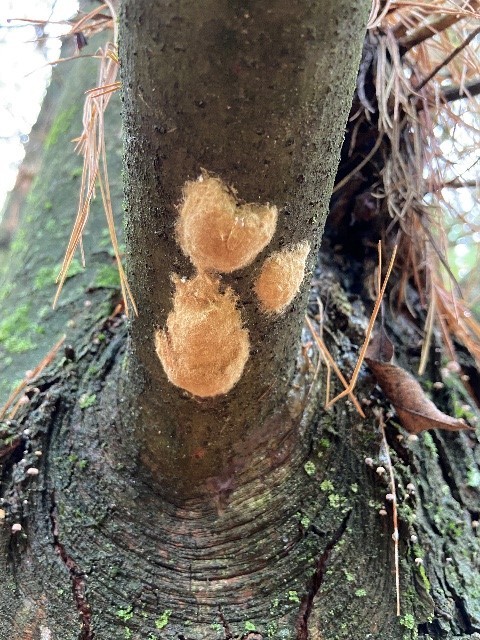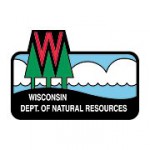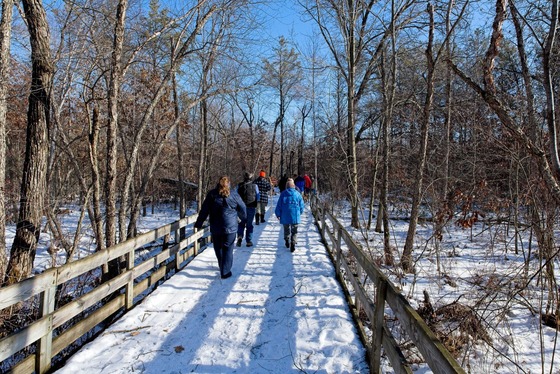DNR Encourages Property Owners To Make Spongy Moth Treatment Plans Early
Pest Outbreak Likely To Continue And Spread

Spongy moth egg masses appear as tan-colored lumps about the size of a nickel or quarter and are found on trees, buildings and other outdoor objects. / Photo Credit: Wisconsin DNR
MADISON, Wis. – The Wisconsin Department of Natural Resources (DNR) is encouraging property owners to examine their trees for egg masses of spongy moth (formerly known as gypsy moth) and plan ahead if control measures are needed.
Spongy moth thrive in warm and dry weather, but even with “average” weather conditions this spring and summer, the outbreak is likely to continue and spread.
Property owners who have oak, birch, crabapple, aspen, willow and linden (basswood) trees should be particularly watchful as the caterpillars of this invasive insect prefer these species but they will also feed on many other kinds of trees and shrubs.
To know if spongy moth are on your property, look for egg masses which are tan-colored lumps about the size of a nickel or quarter. These masses are found on trees, buildings and other outdoor objects and may also be found inside protected places such as firewood piles and birdhouses. Egg masses produced in 2022 will feel firm and appear darker in color than older egg masses, which appear faded, feel spongy, and do not contain viable eggs.
Insecticide treatments, including foliage sprays and soil and trunk injections, may be a suitable option. An egg mass oil can also be applied to prevent the masses from hatching. A professional treatment is likely needed when there are high numbers of egg masses on large trees. When low or moderate numbers of egg masses are present, physical controls can often be used to reduce pest impacts and make insecticide unnecessary.
Host trees that are not treated and lost a lot of leaves and/or were drought-stressed in 2022 are at a higher risk of dying, especially if they lose a lot of leaves again in 2023. Low-vigor oak trees are likely infested by the native beetle, twolined chestnut borer, contributing to tree decline and death. Consult an arborist or forester for additional management recommendations.
Planning for insecticide treatments early can ensure trees will be able to receive treatment ahead of a last-minute rush when pesticide application businesses may already be very busy. Resources for finding a qualified pesticide applicator include the Wisconsin Arborist Association, the International Society of Arboriculture, and a local phone book.
Find additional information on the spongy moth online, including egg mass oiling and removal, physical controls, and insecticide application.
NOTE: This press release was submitted to Urban Milwaukee and was not written by an Urban Milwaukee writer. While it is believed to be reliable, Urban Milwaukee does not guarantee its accuracy or completeness.
Mentioned in This Press Release
Recent Press Releases by Wisconsin Department of Natural Resources
DNR Confirms CWD in Wild Deer in La Crosse County
Dec 22nd, 2025 by Wisconsin Department of Natural ResourcesBaiting And Feeding Ban Extended























